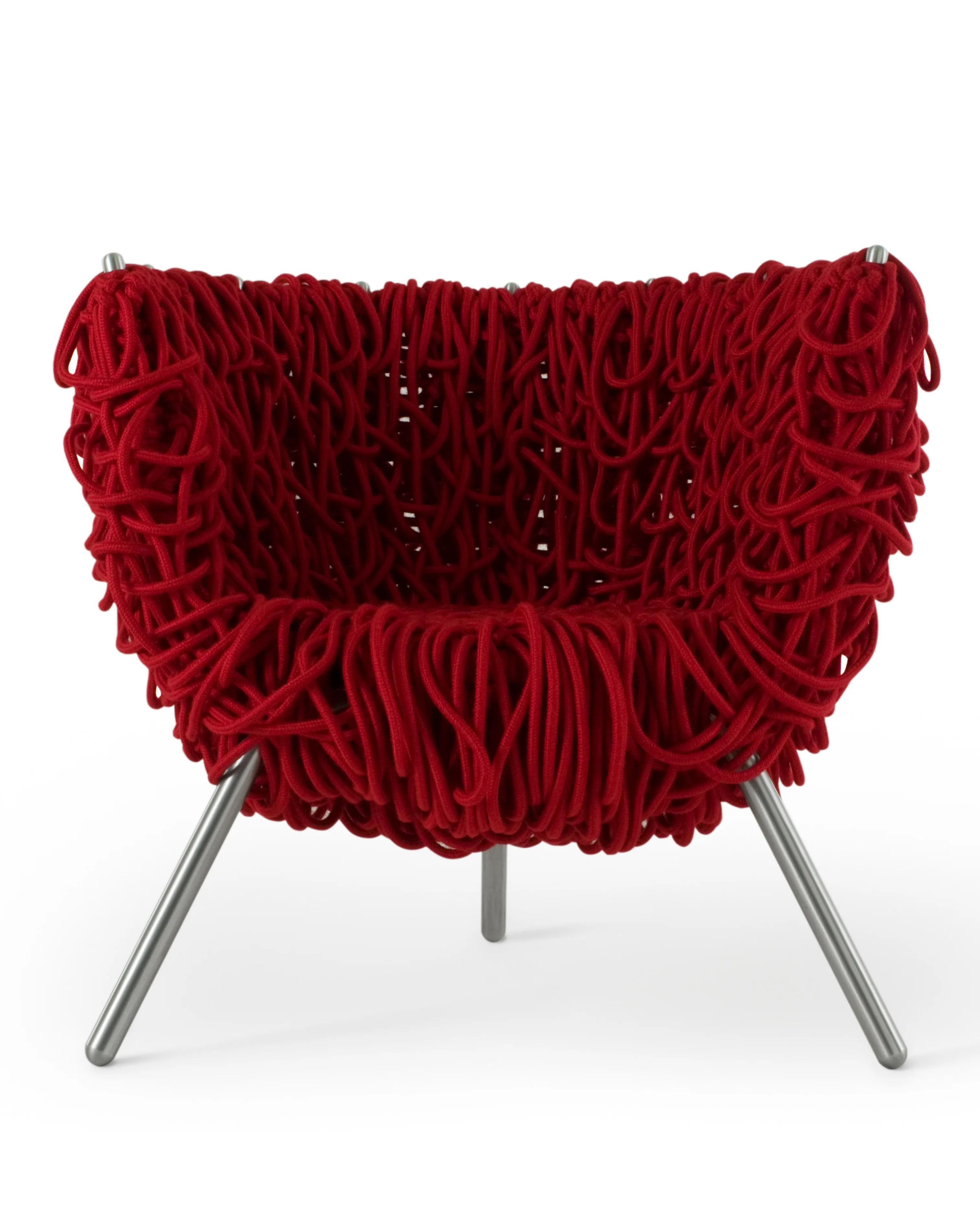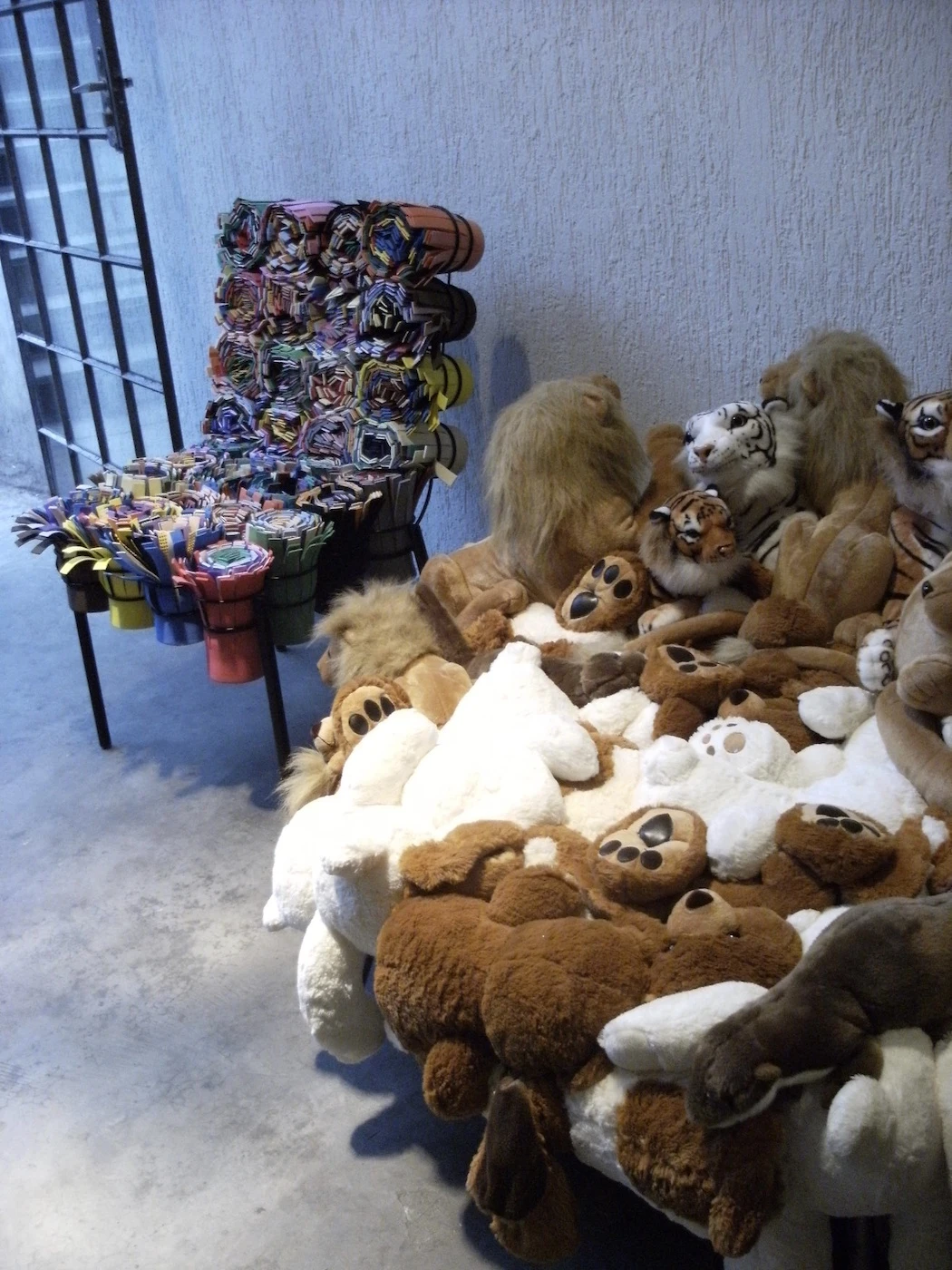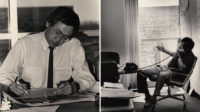Fernando Campana, co-founder of Estudio Campana, a multi-disciplinary design studio, died on November 16, 2022. He was 61. The cause of death has not been disclosed.
Born in the rural town of Brotas, the São Paolo-based designer earned a degree in architecture from the Faculdade de Belas Artes de São Paolo in 1984, before creating Estudio Campana that same year with his older brother Humberto, an attorney.
During the 1980s the studio produced a series of sculptural metal chairs welded from iron called Desconfortáveis (Uncomfortables), eventually moving toward a practice using everyday materials like cardboard, rope, wicker, bamboo, and wood. Their iconic Favela Chair, from 1991 was fabricated with scraps of wood from discarded fruit crates, nailed and glued by hand. “The people who live in favelas construct their own homes, so I thought, why not construct a chair myself,” said Fernando in a discussion about the seat with curator Darrin Alfred from a 2010 interview published in Campana Brothers Complete Works (So Far) (Rizzoli and Albion Gallery, 2010). It was, he explained at the time, meant to symbolize a Brazilian shantytown.

1

2
Campana's Favela Chair (1) and Vermelha Chair (2). Photos courtesy Edra
It was in the 1990s—a time when the design world was primarily focused on the post-World War II movement of the Italians—that the Campanas came on the scene, with work that underscored Brazilian culture and its craft, sculpting furnishings from a range of raw and found materials. Their 1993 Vermelha Chair was a lesson in resourcefulness, hand-woven from cotton rope that enveloped a metal frame. Design journalist Arlene Hirst was “gobsmacked” when she first encountered the chair, manufactured by Italian manufacturer Edra, at the Salone del Mobile in Milan. A year later the chair was included in Project 66: Campana Brothers/Ingo Maurer, a 1998 exhibition at The Museum of Modern Art (MoMA), curated by Paola Antonelli, the museum’s senior curator of architecture and design, an associate at the time. For this show, Antonelli paired the Brazilian brothers’ furniture with German lighting designer Ingo Maurer’s luminaires in vignettes that highlighted a shared passion for materiality and invention.
Both Fernando and Humberto were active in the production process as well, but as is often the case with partners, they remained elusive about specific roles. “Fernando had the training, so he was the more pragmatic one,” noted Antonelli in a recent interview, referring to his architectural roots. “He never discussed it. And I never questioned it. It was implied,” she said. The younger Campana also drew inspiration from his daily routines, local markets and wandering São Paolo’s streets. Antonelli recalled asking him about his use of found objects, asking if they weren’t too cute? His response, “They are not too cute. They are part of my life.”
Many of those found objects—including stuffed animals—made their way onto upholstered seating like the 2002 Banquete series, which became the equivalent of a sold-out Broadway show. It is still produced out of the Campana São Paolo studio, and handsewn by local craftspeople who are considered part of the extended Campana family.
In 2010 the New York- and L.A.-based gallery Friedman Benda began global representation of the brother’s work. “Campana Studio brought a completely fresh perspective, creating a dialogue with local crafts and the use of the readymade,” says co-founder Marc Benda, adding, “They were trailblazers.” The gallery assisted with support of the studio and helped them to balance the commercial success of their practice with its roots in the hand made.

1

2
Estudio Campana's diverse works include the Sushi chair and Stuffed Toy Banquette (1) and the 2016 Zunino House in São Paulo. Photos © Melissa Feldman (1) and Leonardi Finotti (2)
Even though Fernando played down his architectural training, in 2016, the Campanas designed a São Paulo home for clients and friends Solange Ricoy and Stefano Zunino. The façade of the four-story building is wrapped with piassava, a native palm fiber from the northeast region of Brazil, shielding the structure from the tropical heat.

A Metamorfosi seat, made with recycled fabrics and remnants, created in collaboration with Italian textile designer Paola Lenti. Photo © Sergio Chimenti
One of the brothers’ last collaborations—presented in June at the 2022 Salone in Milan—is a collection called Metamorfosi, comprising five large-scale, pouf seats and a tapestry, created in collaboration with Italian textile designer Paola Lenti. Woven from remnants Lenti sorted and saved with CouLture Migrante, a social tailoring atelier (involving men and women asylum seekers residing in Como, Italy) the limited-edition pieces make their North American debut at Design Miami in December.
The work of Estudio Campana can be found at the Vitra Design Museum, Centre Pompidou, Musée Des Arts Décoratifs, MoMA, among other design-focused institutions. In 2020, they were the subject of 35 Revolutions, a retrospective at Museum of Modern Art, Rio de Janeiro on the occasion of their 35th anniversary.
According to Benda, over the past five years, Humberto began to take the lead in the studio while Fernando focused on such projects as the house in Sao Paolo, while continuing to fuse with the studio. “Fernando retreated to a more singular practice making collages as a fine artist,” says Benda. “He never saw a contradiction between multiple disciplines including art, architecture, and design when the method was craft, way before a multi-hyphenate studio was born.”




